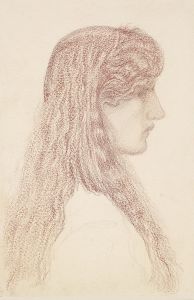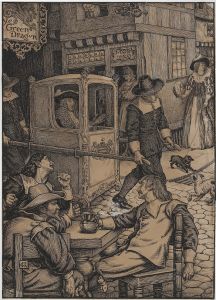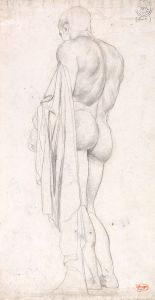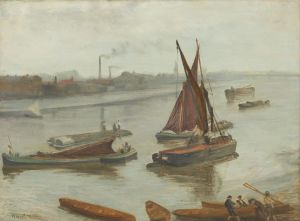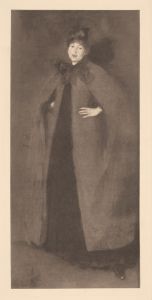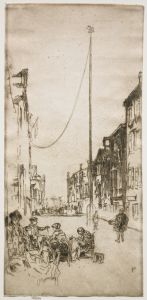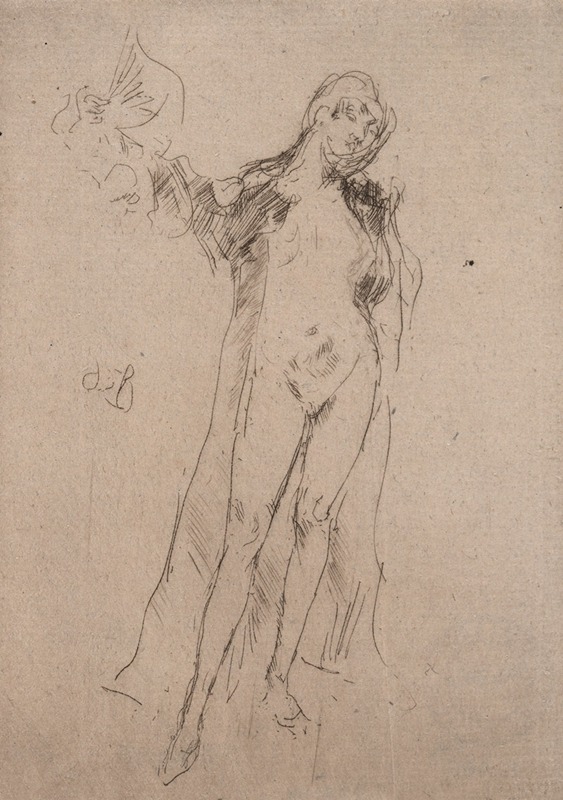
The Fan
A hand-painted replica of James Abbott McNeill Whistler’s masterpiece The Fan, meticulously crafted by professional artists to capture the true essence of the original. Each piece is created with museum-quality canvas and rare mineral pigments, carefully painted by experienced artists with delicate brushstrokes and rich, layered colors to perfectly recreate the texture of the original artwork. Unlike machine-printed reproductions, this hand-painted version brings the painting to life, infused with the artist’s emotions and skill in every stroke. Whether for personal collection or home decoration, it instantly elevates the artistic atmosphere of any space.
James Abbott McNeill Whistler was an influential American artist known for his contributions to the art world in the late 19th century. Among his diverse body of work is the painting titled "The Fan." Whistler, who was born in 1834 in Lowell, Massachusetts, spent much of his career in Europe, where he became associated with the Aesthetic Movement, which emphasized the visual and sensual qualities of art over its narrative content.
"The Fan" is a work that reflects Whistler's interest in Japonisme, a trend in Western art that was inspired by Japanese art and design. This interest was part of a broader fascination with Asian art that swept through Europe and America during the latter half of the 19th century. Whistler was particularly drawn to the simplicity and elegance of Japanese aesthetics, which he incorporated into his own work.
The painting "The Fan" is characterized by its delicate composition and subtle use of color, which are hallmarks of Whistler's style. He often employed a limited palette and focused on creating harmonious arrangements of form and color. This approach can be seen in "The Fan," where Whistler uses soft tones and gentle contrasts to create a sense of balance and tranquility.
Whistler's technique in "The Fan" also reflects his mastery of the medium. He was known for his innovative use of paint and his ability to create texture and depth with minimal brushstrokes. This skill is evident in the way he captures the intricate details of the fan, as well as the surrounding elements of the composition.
"The Fan" is not just a representation of an object but also an exploration of form and space. Whistler's interest in the abstract qualities of art is evident in the way he arranges the elements of the painting. He often sought to create a sense of harmony and rhythm, drawing the viewer's eye across the canvas in a deliberate and thoughtful manner.
Whistler's work, including "The Fan," was influential in the development of modern art. His emphasis on aesthetic beauty and his rejection of traditional narrative content paved the way for future movements that prioritized form and color over storytelling. Whistler's legacy is evident in the works of later artists who continued to explore the possibilities of abstraction and the expressive potential of color and form.
"The Fan" is a testament to Whistler's skill as an artist and his ability to blend different cultural influences into a cohesive and compelling work of art. It remains an important piece in the study of Whistler's oeuvre and the broader context of 19th-century art. Through his innovative approach and dedication to aesthetic principles, Whistler left an indelible mark on the art world, influencing generations of artists who followed in his footsteps.






